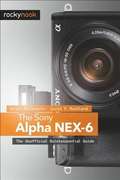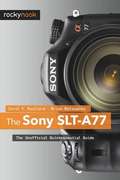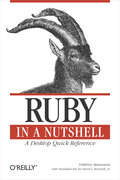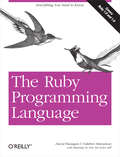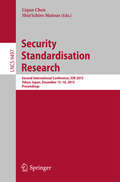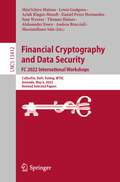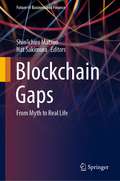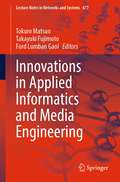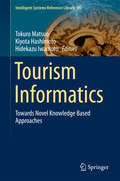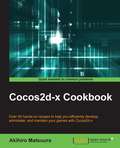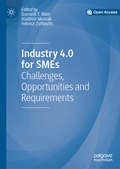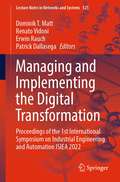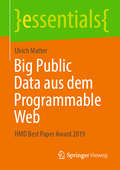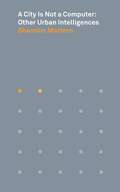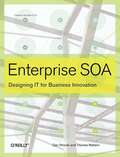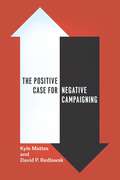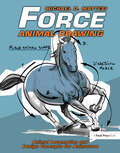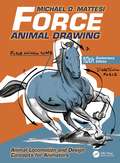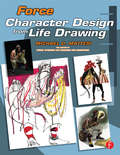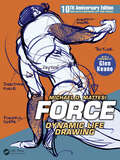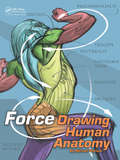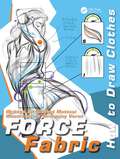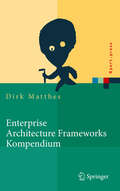- Table View
- List View
The Sony Alpha NEX-7
by Brian Matsumoto Carol F. RoullardThe Sony Alpha NEX-7: The Unofficial Quintessential Guide provides a wealth of experience-based information and insights for owners of this exciting new camera. Authors Carol F. Roullard and Brian Matsumoto team up to help the new user navigate past the confusion factor that often comes with complex and powerful camera equipment. This book explores the features and capabilities of the camera in a way that far surpasses the user's manual. It guides you through the camera features with step-by-step setting adjustments and detailed how, when, and why explanations for each option. Every button, dial, switch, and menu configuration setting is explored in a friendly manner, with suggestions and tips for setup according to various shooting styles. The informative text is illustrated with screenshots and example images throughout, making it easy to follow along. The authors cover everything from the basic features of the camera to numerous advanced photographic applications. The first section of the book teaches the new user to start taking pictures immediately by using the camera's Intelligent Automatic mode. The second section covers how to begin taking more control by switching to the semi-automatic modes. Finally, you'll learn to take full manual control of the camera, allowing you to break some "rules" and capture images that are a unique reflection of your creative personality. Carol and Brian go beyond just the camera itself and share how third-party software and optional accessories can improve on the camera's standard commands. You'll even learn how the electronic viewfinder, the fixed mirror, and Sony's novel shutter design improve the camera's utility for critical scientific photography (i.e., photomicrography and photography through the telescope).The Sony Alpha NEX-7: The Unofficial Quintessential Guide will allow you to really take control of your camera, to push the envelope, and to have fun.
The Sony SLT-A77
by Brian Matsumoto Carol F. RoullardThis book provides enthusiastic photographers with a wealth of information about the unique features of the Sony SLT-A77, an interchangeable-lens camera with an electronic viewfinder and a fixed, translucent mirror. The A77 differs from the current crop of DSLRs in its ability to use a phase detection focusing system throughout the entire picture-taking process, for both still photographs and videos. This provides an immediacy and responsiveness when using burst shots and creating HD videos that is unavailable in any other camera. In this guide, authors Carol Roullard and Brian Matsumoto teach you how to obtain exceptional photographs and videos as they cover everything from the basics of using the camera's automatic modes, to the more advanced aperture-priority, shutter-priority, program, and manual exposure modes. You'll also learn how best to take advantage of features such as the built-in dynamic range adjustment, sweep panoramic, GPS, colorization modes, facial detection and recognition, multiple shot exposures, and HD video. The authors provide you with an opportunity to improve your skills even further by discussing how third-party software and accessories can improve Sony's standard commands. You'll also learn about how the electronic viewfinder, fixed mirror, and Sony's novel shutter design improve the camera's utility for scientific photography through the microscope and telescope. Additional topics include:Advantages of the electronic viewfinder for previewing your photographs Using the accessory Sony shoe-mount flash Advantages of using the JPEG file format Advantage of having a fixed mirror and electronic first curtain shutter Settings for using the camera on a microscope and telescope Using the older Minolta Maxxum lenses
Basic Immunology and Its Clinical Application (Advances in Experimental Medicine and Biology #1444)
by Mitsuru MatsumotoThis book overviews ongoing and upcoming clinical applications of basic immunology. Recent advances in our knowledge of immunology coupled with new technologies have aided in the development of efficient cancer immunotherapy, as well as the control of emerging microorganisms such as SARS-CoV-2. However, knowledge of basic immunology has not been fully utilized even after the discoveries of immune checkpoint inhibition for cancer immunotherapy and the development of mRNA vaccination against SARS-CoV-2. There is still room for improving the clinical application of basic immunology. The book summarizes the achievements in clinical applications of basic immunology and highlights what can be further extended to make immunology a more practical human science. Basic immunology and its clinical applications are two wheels of the same cart in the immunology field, which aids in the development of more efficient cancer immunotherapy and rapid control of infectious diseases against microorganisms, including new viruses and classical toxoplasmosis. The exploration of ongoing and upcoming applications of basic immunology in this book makes it a useful resource for immunologists, physicians, molecular and genome biologists, bioinformaticians, and students in these fields.
Ruby in a Nutshell
by Yukihiro MatsumotoRuby is an absolutely pure object-oriented scripting language written in C and designed with Perl and Python capabilities in mind. While its roots are in Japan, Ruby is slowly but surely gaining ground in the US. The goal of Yukihiro Matsumoto, creator of Ruby and author of this book, is to incorporate the strengths of languages like Perl, Python, Lisp and Smalltalk. Ruby is a genuine attempt to combine the best of everything in the scripting world. Since 1993, Ruby mailing lists have been established, Web pages have formed, and a community has grown around it. The language itself is very good at text processing and is notable for its broad object orientation. Ruby is portable and runs under GNU/Linux (and other Unices) as well as DOS, MS Windows and Mac. With Ruby in a Nutshell, Matsumoto offers a practical reference to the features of this new language including the command-line options, syntax, built-in variables, functions, and many commonly used classes and modules. This guide covers the current stable version of Ruby (1.6), yet is applicable to the development version 1.7 and the next planned stable version 1.8. You will find a thorough description of Ruby's language syntax, and a description of the core functionality built into the standard Ruby interpreter, which has more than 800 built-in methods in 42 classes and modules. Ruby finds its power through its built-in libraries, and this handy volume take you through the many useful libraries that come with the standard Ruby distribution--from network access via HTTP and CGI programming, to data persistence using the DBM library. This book concludes with coverage of the unique tools that come with Ruby, including the debugger, profiler, and irb (or interactive ruby.) Find out how Ruby combines the strengths of other languages, and why it has captured the interest of so many open source programmers. As part of the successful "in a nutshell" series of books from O'Reilly & Associates, Ruby in a Nutshell is for readers who want a single desktop reference for all their needs.
The Ruby Programming Language
by Yukihiro Matsumoto David FlanaganThe Ruby Programming Language is the authoritative guide to Ruby and provides comprehensive coverage of versions 1.8 and 1.9 of the language. It was written (and illustrated!) by an all-star team: David Flanagan, bestselling author of programming language "bibles" (including JavaScript: The Definitive Guide and Java in a Nutshell) and committer to the Ruby Subversion repository.Yukihiro "Matz" Matsumoto, creator, designer and lead developer of Ruby and author of Ruby in a Nutshell, which has been expanded and revised to become this book.why the lucky stiff, artist and Ruby programmer extraordinaire. This book begins with a quick-start tutorial to the language, and then explains the language in detail from the bottom up: from lexical and syntactic structure to datatypes to expressions and statements and on through methods, blocks, lambdas, closures, classes and modules. The book also includes a long and thorough introduction to the rich API of the Ruby platform, demonstrating -- with heavily-commented example code -- Ruby's facilities for text processing, numeric manipulation, collections, input/output, networking, and concurrency. An entire chapter is devoted to Ruby's metaprogramming capabilities.The Ruby Programming Language documents the Ruby language definitively but without the formality of a language specification. It is written for experienced programmers who are new to Ruby, and for current Ruby programmers who want to challenge their understanding and increase their mastery of the language.
Security Standardisation Research
by Shin'Ichiro Matsuo Liqun ChenThis bookconstitutes the refereed proceedings of the Second International Conference onSecurity Standardisation Research, SSR 2015, held in Tokyo, Japan, in December2015. The 13papers presented in this volume were carefully reviewed and selected from 18submissions. They are organized in topical sections named: bitcoin andpayment; protocol and AΠ analysis on cryptographic algorithm; privacy; andtrust and formal analysis.
Financial Cryptography and Data Security. FC 2022 International Workshops: CoDecFin, DeFi, Voting, WTSC, Grenada, May 6, 2022, Revised Selected Papers (Lecture Notes in Computer Science #13412)
by Shin’ichiro Matsuo Lewis Gudgeon Ariah Klages-Mundt Daniel Perez Hernandez Sam Werner Thomas Haines Aleksander Essex Andrea Bracciali Massimiliano SalaThis book constitutes revised selected papers from the workshops that were affiliated with the 26th International Conference on Financial Cryptography and Data Security, FC 2022, which was held in Grenada during May 2022. FC 2022 presents the following four workshops:CoDecFin 2022: 3rd Workshop on Coordination of Decentralized FinanceDeFi 2022: 2nd Workshop on Decentralized FinanceVoting 2022: 7th Workshop on Advances in Secure Electronic VotingWTSC 2022: 6th Workshop on Trusted Smart Contracts
Blockchain Gaps: From Myth to Real Life (Future of Business and Finance)
by Shin’ichiro Matsuo Nat SakimuraThis book analyzes the fundamental issues faced when blockchain technology is applied to real-life applications. These concerns, not only in the realm of computer science, are caused by the nature of technological design. Blockchain is considered the foundation of a wide range of flexible ecosystems; its technology is an excellent mixture of mathematics, cryptography, incentive mechanisms, economics, and pertinent regulations. The book provides an essential understanding of why such fundamental issues arise, by revising the underlying theories. Blockchain theory is thus presented in an easy-to-understand, useful manner. Also explained is the reason why blockchain is hard to adopt for real-life problems but is valuable as a foundation for flexible ecosystems. Included are directions for solving those problems and finding suitable areas for blockchain applications in the future. The authors of this work are experts from a wide range of backgrounds such as cryptography, distributed computing, computer science, trust, identity, regulation, and standardization. Their contributions collected here will appeal to all who are interested in blockchain and the elements surrounding it.
Innovations in Applied Informatics and Media Engineering (Lecture Notes in Networks and Systems #677)
by Tokuro Matsuo Takayuki Fujimoto Ford Lumban GaolThis book aims to share the theory and practice in innovative human/society-oriented information systems. The purpose of information technology is for people, communities, and societies, and we cannot ignore the human behavior and social features to design better information systems. The book includes the selected papers in the International Conference on Applied Informatics and Media Design 2019 (AIMD 2019) held at California State University, Bakersfield, USA, and International Conference on Applied Information Technologies 2021 (AIT 2021) held online, which are focused on information design, human–computer interaction, and social support systems. The book also contains multi-aspect contributions on applied informatics and media engineering, such as color design, online learning, creativity support, philosophical issues, elder treatment, AI, and business informatics.
Tourism Informatics
by Tokuro Matsuo Kiyota Hashimoto Hidekazu IwamotoThis book introduces new trends of theory and practice of information technologies in tourism. The book does not handle only the fundamental contribution, but also discusses innovative and emerging technologies to promote and develop new generation tourism informatics theory and their applications. Some chapters are concerned with data analysis, web technologies, social media and their case studies. Travel information on the web provided by travelers is very useful for other travelers make their travel plan. A chapter in this book proposes a method for interactive retrieval of information on accommodation facilities to support travelling customers in their travel preparations. Also an adaptive user interface for personalized transportation guidance system is proposed. Another chapter in this book shows a novel support system for the collaborative tourism planning by using the case reports that are collected via Internet. Also, a system for recommending hotels for the users is proposed and evaluated. Other chapters are concerned with recommendation, personalization and other emerging technologies.
Cocos2d-x Cookbook
by Akihiro MatsuuraOver 50 hands-on recipes to help you efficiently administer and maintain your games with Cocos2d-xAbout This BookBuild exciting games, apps, and other cross-platform GUI based interactive programs with Cocos2d-xExplore the nitty-gritty of the latest Cocos2d-x on the block, version 3.6A step-by-step guide that shows you the functionalities of Cocos2d-x followed by an explanation of how they workWho This Book Is ForIf you are a game developer and want to learn more about cross-platform game development in Cocos2d-x, then this book is for you. Knowledge of C++, Xcode, Eclipse, and how to use commands in the terminal are prerequisites for this book.What You Will LearnInstall and set up Cocos2d-x for your development environmentBuild, test, and release game applications for iOS and AndroidDevelop your games for multiple platformsCustomize Cocos2d-x for your gamesUse a physical engine in your gamesSave and load text, JSON, XML, or other formatsExplore the brand new features of Cocos2d-xIn DetailCocos2d-x is a suite of open source, cross-platform game-development tools used by thousands of developers all over the world. Cocos2d-x is a game framework written in C++, with a thin platform-dependent layer. Completely written in C++, the core engine has the smallest footprint and the fastest speed of any other game engine, and is optimized to be run on all kinds of devices.You will begin with the initial setup and installation of Cocos2d before moving on to the fundamentals needed to create a new project. You will then explore and create the sprites, animations, and actions that you will include in the game. Next you will look at strings and create labels, including a label with True Type Font (TTF) font support.Later, you will learn about layer and scene creation and transition. Then you will create the GUI parts essential for a game, such as buttons and switches. After that, you will breathe life into the game with background music and sound effects using the all new Cocos2d-x audio engine. You will then discover how to manage resource files and implement processes that depend on the operating system.Finally, you will polish your game with physics such as gravity and elevation, learn about tools that will help you make games more robust and stable, and get to know best practices to improve the game you have developed.Style and approachThis book is an easy-to-follow guide with ample recipes to help you better understand Cocos2d-x.
Industry 4.0 for SMEs: Challenges, Opportunities and Requirements
by Dominik T. Matt Vladimír Modrák Helmut ZsifkovitsThis open access book explores the concept of Industry 4.0, which presents a considerable challenge for the production and service sectors. While digitization initiatives are usually integrated into the central corporate strategy of larger companies, smaller firms often have problems putting Industry 4.0 paradigms into practice. Small and medium-sized enterprises (SMEs) possess neither the human nor financial resources to systematically investigate the potential and risks of introducing Industry 4.0. Addressing this obstacle, the international team of authors focuses on the development of smart manufacturing concepts, logistics solutions and managerial models specifically for SMEs. Aiming to provide methodological frameworks and pilot solutions for SMEs during their digital transformation, this innovative and timely book will be of great use to scholars researching technology management, digitization and small business, as well as practitioners within manufacturing companies.
Managing and Implementing the Digital Transformation: Proceedings of the 1st International Symposium on Industrial Engineering and Automation ISIEA 2022 (Lecture Notes in Networks and Systems #525)
by Dominik T. Matt Renato Vidoni Erwin Rauch Patrick DallasegaThis book shows how companies can practically implement the advantages of Industry 4.0 and digitalization and also addresses the current challenges with regard to engineering education for Industry 4.0. In this book, we collect the contributions of the 1st Symposium on Industrial Engineering and Automation (ISIEA 2022), which took place from June 21–22, 2022 at the Free University of Bolzano. The contributions cover three basic areas: (1) best practice examples and technical solutions for the implementation of Industry 4.0 in production and logistics, (2) management-oriented approaches for the digital transformation in companies, and (3) addressing Industry 4.0 in engineering education. The book targets different readers. Researchers find approaches to current research topics regarding Industry 4.0. Practitioners find valuable examples for technological implementations as well as management approaches for introducing digitalization. Students and lecturers find hints on how Industry 4.0 can be integrated into university teaching.
Big Public Data aus dem Programmable Web: HMD Best Paper Award 2019 (essentials)
by Ulrich MatterDie Verbreitung des Internets und die zunehmende Digitalisierung in der öffentlichen Verwaltung und Politik haben über die letzten Jahre zu einer starken Zunahme an hochdetaillierten digitalen Datenbeständen über politische Akteure und Prozesse geführt. Diese big public data werden oft über programmatische Schnittstellen (Web APIs; programmable Web) verbreitet, um die Einbettung der Daten in anderen Webanwendungen zu vereinfachen. Die Analyse dieser Daten für wissenschaftliche Zwecke in der politischen Ökonomie und Politologie ist vielversprechend, setzt jedoch die Implementierung einer data pipeline zur Beschaffung und Aufbereitung von Daten aus dem programmable Web voraus. Dieses Buch diskutiert die Chancen und Herausforderungen der praktischen Nutzung dieser Datenbestände für die empirische Forschung und zeigt anhand einer Fallstudie ein mögliches Vorgehen zur systematischen Analyse von big public data aus dem programmable Web auf.
A City Is Not a Computer: Other Urban Intelligences (Places Books #2)
by Shannon MatternA bold reassessment of "smart cities" that reveals what is lost when we conceive of our urban spaces as computersComputational models of urbanism—smart cities that use data-driven planning and algorithmic administration—promise to deliver new urban efficiencies and conveniences. Yet these models limit our understanding of what we can know about a city. A City Is Not a Computer reveals how cities encompass myriad forms of local and indigenous intelligences and knowledge institutions, arguing that these resources are a vital supplement and corrective to increasingly prevalent algorithmic models.Shannon Mattern begins by examining the ethical and ontological implications of urban technologies and computational models, discussing how they shape and in many cases profoundly limit our engagement with cities. She looks at the methods and underlying assumptions of data-driven urbanism, and demonstrates how the "city-as-computer" metaphor, which undergirds much of today's urban policy and design, reduces place-based knowledge to information processing. Mattern then imagines how we might sustain institutions and infrastructures that constitute more diverse, open, inclusive urban forms. She shows how the public library functions as a steward of urban intelligence, and describes the scales of upkeep needed to sustain a city's many moving parts, from spinning hard drives to bridge repairs.Incorporating insights from urban studies, data science, and media and information studies, A City Is Not a Computer offers a visionary new approach to urban planning and design.
Enterprise SOA: Designing IT for Business Innovation
by Thomas Mattern Dan WoodsInformation Technology professionals can use this book to move beyond the excitement of web services and service oriented architecture (SOA) and begin the process of finding actionable ideas to innovate and create business value. In Enterprise SOA: Designing IT for Business Innovation , SAP's blueprint for putting SOA to work is analyzed from top to bottom. In addition to design, development, and architecture, vital contextual issues such as governance, security, change management, and culture are also explored. This comprehensive perspective reduces risk as IT departments implement ESA, a sound, flexible architecture for adapting business processes in response to changing market conditions. This book answers the following questions: What forces created the need for Enterprise Services Architecture? How does ESA enable business process innovation? How is model-driven development used at all levels of design, configuration, and deployment? How do all the layers of technology that support ESA work together? How will composite applications extend business process automation? How does ESA create new models for IT governance? How can companies manage disruptive change? How can enterprise services be discovered and designed? How will the process of adapting applications be simplified? Based on extensive research with experts from the German software company SAP, this definitive book is ideal for architects, developers, and other IT professionals who want to understand the technology and business relevance of ESA in a detailed way-especially those who want to move on the technology now, rather than in the next year or two.
The Positive Case for Negative Campaigning
by Kyle Mattes David P. RedlawskTurn on the television or sign in to social media during election season and chances are you’ll see plenty of negative campaigning. For decades, conventional wisdom has held that Americans hate negativity in political advertising, and some have even argued that its pervasiveness in recent seasons has helped to drive down voter turnout. Arguing against this commonly held view, Kyle Mattes and David P. Redlawsk show not only that some negativity is accepted by voters as part of the political process, but that negative advertising is necessary to convey valuable information that would not otherwise be revealed. The most comprehensive treatment of negative campaigning to date, The Positive Case for Negative Campaigning uses models, surveys, and experiments to show that much of the seeming dislike of negative campaigning can be explained by the way survey questions have been worded. By failing to distinguish between baseless and credible attacks, surveys fail to capture differences in voters’ receptivity. Voters’ responses, the authors argue, vary greatly and can be better explained by the content and believability of the ads than by whether the ads are negative. Mattes and Redlawsk continue on to establish how voters make use of negative information and why it is necessary. Many voters are politically naïve and unlikely to make inferences about candidates’ positions or traits, so the ability of candidates to go on the attack and focus explicitly on information that would not otherwise be available is crucial to voter education.
Force: Animal locomotion and design concepts for animators (Force Drawing Ser.)
by Michael D. MattesiMany artists are unsure how to bridge the gap between the many basic 'how to draw' books and the more advanced ones dealing with the esoteric details of composition, perspective and anatomy. Force: Animal Drawing is the comprehensive guide to developing artistic animals that are creative, dynamic and anatomical, bridging the gap between foundational art and advanced techniques. Artists and animators alike all find animal inspiration when animating characters- be they human or inhuman. For a unique 'larger than life' character, readers will learn to apply the unique facets of animal movement, locomotion, expressions, facial features, physical build and personality to their traditional and digital art. Readers will also adapt key industry tricks and techniques to personify animal animations with key characteristics of a human's face. Explore the practical application of force theories and learn from today's leading character designers with the included artist interviews and an extended video tutorial via www.drawingforce.com.
Force: Animal Locomotion and Design Concepts for Animators (Force Drawing Series)
by Mike MattesiThis 10th Anniversary Edition of Force: Animal Drawing: Animal Locomotion and Design Concepts for Animators offers readers an enlarged and an enhanced selection of images that apply FORCE to animals. With larger images, readers can better appreciate and learn how to bring their own animal illustrations to life. New drawings and facts about the animals create a more comprehensive edition for your library. Readers will also adapt key industry techniques that will help personify animal animations as well as endowing their creations with human-like expressions and unique animal movement. content can be found at DrawingFORCE.com Key Features: • This full-color 10th Anniversary Edition makes FORCE even easier to understand through great diagrams and illustrations • Color-coded page edges help you find more easily the animal you want to draw • Learn about key specifications for each mammal such as their weight range, food they eat, and how fast they run • Video content can be found at DrawingFORCE.com Mike Mattesi has authored four FORCE books, published in numerous languages and utilized around the world to inspire and educate artists on the concept of FORCE. He has instructed FORCE Drawing for more than twenty-five years and inspired thousands of artists. Simultaneously, he has been contributing his skills as a professional artist on numerous award-winning projects in varied capacities and has collaborated with Pixar, Walt Disney Feature Animation, Walt Disney Consumer Products, Marvel Comics, Hasbro Toys, ABC, Microsoft, Electronic Arts, DreamWorks/PDI, Zynga, the School of Visual Arts, Beijing University, Art Center, Scuola Internazionale di Comics, San Jose State University, the Academy of Art University, Nickelodeon, LeapFrog, and many others. His students occupy all fields of the art industry and have themselves gained prestige for their abilities. Visit Michael at DrawingFORCE.com; connect with him on Facebook at DrawingFORCE.com with Mike Mattesi and at Instagram @michaelmattesi; or email him directly at mike@drawingFORCE.com. Learn more about FORCE at: DrawingFORCE.com
Force: Character Design From Life Drawing (Force Drawing Ser.)
by Mike MattesiDesign creative characters inspired by real people. Let Mike Mattesi show you how to use life drawing to discover the poses, features and personalities which form the basis of character and then build, develop and 'PUSH' your drawings to new heights of dramatic and visual impact for believable characters audiences can relate to.Packed with color illustrations and photographs of the models who inspired them. With step-by-step explanation of how the characters were developed and exercises for you to sharpen your skills this is everything you need to bring your characters to life.
FORCE: 10th Anniversary Edition (Force Drawing Series)
by Mike MattesiBring your artwork to life with the power of the FORCE! Watch, listen, and follow along as Mike Mattesi demonstrates the fundamental FORCE line and explains dynamic figure drawing techniques through 30 videos that are launched through the book's companion App. Packed with superb, powerfully drawn examples, the updated third edition of FORCE features an all-new section on the "FORCE blob," and dozens of fresh illustrations. Mike Mattesi’s 10th anniversary edition of FORCE will teach readers how to put thought and imagination to paper. Whether you are an illustrator, animator, comic book artist, or student, you'll learn to use rhythm, shape, and line to bring out the life in any subject. The 10th Anniversary Edition contains numerous improvements. Around 30 videos are embedded within the book and accessible through the FORCE Drawing App. In the App, click on the image of the camera, point your mobile device’s camera at the page with the symbol, and then finally tap the video card image floating above the drawing to launch the video. Then sit back and watch the video that shows me creating that drawing and discussing my process. Many new drawings can be found within this edition and the addition of color now further clarifies the theory of FORCE. Key Features The unique, dynamic learning system that has helped thousands of artists enhance their figure drawing abilities Dozens of updated illustrations and all-new content, exclusive to the 3rd edition Select pages can be scanned by your smartphone or other device to pull up bonus video content, enhancing the learning process Companion App: Nearly 50 videos are available on the free FORCE Drawing companion app that can be downloaded through Google Play or the Apple App Store
FORCE: Drawing Human Anatomy (Force Drawing Series)
by Mike MattesiThe newest book in Michael Mattesi’s Force Drawing series takes movement to the next level. Force: Drawing Human Anatomy, explores the different facets of motion and the human body. As opposed to the memorization technique, Mattesi stresses the function of each body part and how gravity relative to different poses affects the aesthetics and form of muscle. The chapters are divided by the different parts of the body, thus allowing the reader to concentrate on mastery one body part at a time. Color coded images detail each muscle and their different angles. Special consideration is given to anatomy for animation, allowing the reader to create a character that is anatomically accurate in both stillness and motion. Key Features Detailed visual instruction includes colourful, step-by-step diagrams that allow you to easily follow the construction of an anatomically correct figure. Clearly organized and color coded per regions of the body's anatomy, a clarity of design for better reader understanding. Learn how anatomy is drawn and defined by the function of a pose. Visit the companion website for drawing demonstrations and further resources on anatomy.
FORCE Fabric: How to Draw Clothes (Force Drawing Series)
by Mike MattesiThe nude figure defines the best way to learn the fundamentals of drawing, yet the end goal of most art presents clothed figures, be it animation, video games, film, or fine art. This sixth book in the ‘FORCE’ series instructs artists on how to understand fabric with FORCE, thus leading to improved drawings of clothed figures. Expertly organized and beautifully illustrated, the book instructs artists to see clothing in a new way, through FORCE. Michael’s clear, concise, and informal writing coupled with Mritunjay and Michael’s FORCE drawings of clothed models comprehensibly informs you, the curious artist, to identify and draw FORCE clothing. Key Features: The unique, dynamic FORCE Drawing learning system that has helped thousands of artists enhance their figure drawing abilities now brings clothing to the figure! Easy to follow fundamentals on drawing clothed figures for games, animation, film, or fine art A clear, organized, and understandable, step-by-step approach to learn about the effects of FORCE on fabric and how that pertains to drawing clothes Learn to see clothes through tight, medium, and loose-fit and discover the common fold types per category, making it easier to identify and draw A ‘sticker system’ that presents the different types of folds found in different fit types of clothing Each chapter has exercises you can use to help you learn the process of drawing clothes Find out how line can bring the texture of different fabrics to your clothing drawings Includes robust author website with further information, forums, and videos Color-coded page edges to quickly find the material you need Unlock your imagination; put the theory into practice with detailed exercises to sharpen your skills
The FORCE Companion: Quick Tips and Tricks (Force Drawing Series)
by Mike Mattesi Swendly BeniliaSwendly Benilia shares with us simple and tangible tips and tricks to understanding and drawing FORCE across hundreds of drawings full of dunamism and energy! This book is an expellant companion to the FORCE brand since it delivers hundreds of FORCE drawings with succinct notations, filtered and approved by Mike Mattesi, about how to improve your FORCE drawing skills Key Features: Hundreds of dynamic FORCE drawing that inspire the reader to see and draw FORCE Succinct tips and tricks keep it light and educational The tips and tricks not only explain how but also why the drawings are successful. This is unique to the FORCE Drawing method Each page shares numerous drawing around a FORCE idea with a short paragraph to further clarify the FORCE tip or trick. Explaining to the reader why the drawings work increases their ability of achieving the same level of excellence Swendly Benilia is a professional character designer and illustrator. During his five years in the field he contributed with artwork for various game and publishing projects. Swendly also instructs FORCE Drawing. Michael Mattesi has authored four FORCE books, published in numerous languages, utilized around the world to inspire and educate artists on the concept of FORCE. He has instructed FORCE Drawing for over twenty years and inspired thousands of artists. Simultaneously, Michael has been contributing his skills as a professional artists on numerous award-winning projects in varied capacities and has collaborated with Pixar, Walt Disney Feature Animation, Walt Disney Consumer Products, Marvel Comics, Hasbro Toys, ABC, Microsoft, Electronic Arts, DreamWorks/PDI, Zynga, The School of Visual Arts, Beijing University, Art Center, Scuola Internazionale di Comics, San Jose State University. The Academy of Art University, Nickelodeoan, LeapFrog and many others. Micael’s students occupy all fields of the art industry and have themselves gained prestige for their abilities. Michael lives in northern California with his wife and two daughters. Visit him at: DrawingFORCE.com and connect with Michael on Facebook at: DrawingFORCE.com with Mike Mattesi or email him directly: mike@drawingforce.com Key Features Hundreds of dynamic FORCE drawings that inspire the reader to see and draw FORCE. Compact tips and tricks keep it light and educational. The tips and tricks explain how and why the drawings are successful. Explaining to the you why the drawings work increases your ability of achieving the same level of excellence.
Enterprise Architecture Frameworks Kompendium
by Dirk MatthesIn dem Band werden 50 Enterprise Architecture Frameworks (EAF) ausführlich behandelt und 45 weitere hinsichtlich ihrer Intention kurz und prägnant dargestellt. Die detaillierten Beschreibungen erlauben durch ein einheitliches Raster den Vergleich unterschiedlicher EAF. Sie enthalten Informationen zum Entwickler, zu Versionen, zur Marktrelevanz, zu Abhängigkeiten, Verfügbarkeit, unterstützenden Tools sowie Anschaffungskosten. Die Unterstützungsvielfalt, die Frameworks bieten, demonstriert der Autor anhand eines Anwendungsszenarios.
